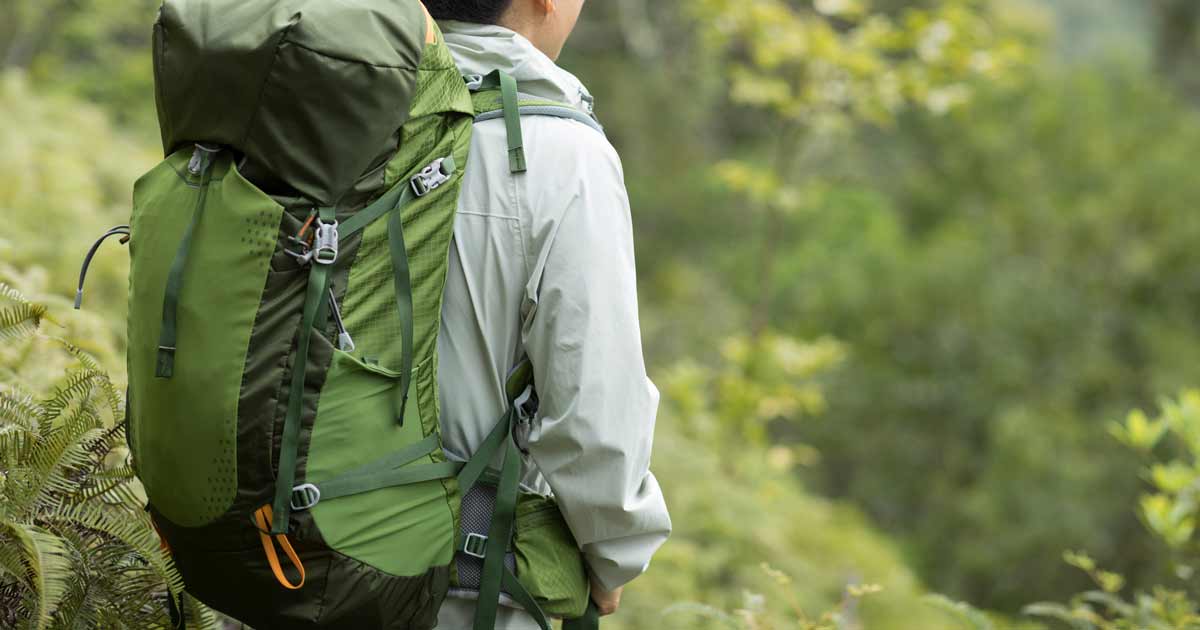Ever feel like your backpack’s more of a beast than a trusty companion? You’re not alone. But what if there was a magic number, a sweet spot that could transform your hikes from slog fests to joyous strolls? Enter the world of base weight. Here’s a few tips to help calculate and optimise your base weight.
Understanding base weight
Base weight is simply the total weight of your gear excluding consumables like food, water, and fuel. It’s the constant companion you carry on every adventure, the foundation on which your hiking life revolves. By focusing on this number, you unlock a level of efficiency and comfort that can revolutionise your outdoor experience. Food, water, and fuel – your trip’s essentials – decrease in weight throughout your hike. Base weight, on the other hand, remains fixed, providing a consistent reference point for your total pack load. This allows you to track and optimise your carrying weight regardless of consumables.
Items to include in your base weight
Your base weight includes everything from your tent and sleeping bag to your clothing, rain gear, backpack, and cooking utensils. Basically, anything that hits your shoulders before you pack your first trail mix bar. Let’s unpack your base weight in detail. Here’s a breakdown of the key categories and some essential items within each:
1. Shelter:
Tent: Your cozy haven against the elements. Choose one that balances weight, protection, and ease of setup for your adventure.
Tarp: A versatile alternative or addition to a tent, offering lightweight sun and rain protection.
Ground Pad: Insulation from the cold earth, ensuring a restful night’s sleep. Consider inflatable, foam, or self-inflating options.
2. Sleeping System:
- Sleeping Bag: Your personal cocoon of warmth, tailored to the trip’s climate. Choose a temperature rating for comfortable sleep.
- Sleeping Pad: An extra layer of warmth and comfort between you and the ground.
- Pillow: A touch of luxury, but opt for inflatable or ultralight versions to keep weight down. I often stuff some clothes into a sack and use that as a pillow.
3. Backpack:
- Your trusty steed: Choose a durable and comfortable pack sized for your gear and trip length. Remember proper fit for optimal weight distribution.
- Pack Cover: A shield against unexpected downpours, protecting your gear.
4. Clothing:
- Base Layers: Moisture-wicking fabrics that keep you dry and comfortable, even on sweaty climbs.
- Insulating Layers: Fleece or down jackets for warmth in chilly environments.
- Hiking Pants: Durable and flexible pants, with convertible options for adaptability.
- Rain Gear: A waterproof jacket and pants to keep you dry during unexpected showers.
- Hiking Socks: Moisture-wicking socks to prevent blisters and maintain foot comfort. Choose wool or synthetic blends for optimal performance.
- Footwear: Hiking boots or trail shoes providing traction and support on varying terrain. Select based on personal preference and trail conditions.
5. Cooking Gear:
- Stove: A lightweight and efficient cookstove to prepare meals and boil water. Canister or liquid fuel options available.
- Pot/Mug: A versatile vessel for cooking meals and enjoying hot drinks.
- Utensils: Lightweight spoon, fork, and knife to avoid the need for bulky cutlery.
6. Hydration System (not water):
- Bladder and Reservoir: Convenient way to carry and access water throughout your hike. Choose a size based on your needs and trip length.
- Water Purification: Ensure safe drinking water with a filter, purifier tablets, or UV treatment.
7. Navigation:
- Map and Compass: Traditional tools for reliable navigation. Learn to use them before hitting the trail.
- GPS Device: A convenient option for navigation and tracking your route. Consider battery life and signal availability.
- Headlamp: Essential for nighttime activities and emergencies. Choose a durable and compact one with good light output.
8. Miscellaneous Gear:
- Multi-tool: A versatile tool for repairs and small tasks. Choose one with features relevant to your needs.
- First-aid Kit: Be prepared for minor injuries with essential medical supplies. Pack based on potential risks and personal needs.
- Repair Kit: Gear can break, so be ready to fix ripped seams, tears, or punctures with a compact repair kit.
- Personal Hygiene Items: Toilet paper, trowel, and hygiene wipes for wilderness bathroom breaks. Choose biodegradable options to minimise environmental impact.
Remember, this is just a guide. Optimise your base weight based on your specific needs, preferences, and the nature of your trip. Experiment and find the perfect balance between comfort, efficiency, and your personal hiking style! Happy trails and remember to leave no trace behind.

Importance of a lower base weight
Why all the fuss over a few kilo’s? Here’s where a lower base weight provides advantages:
- Reduced Fatigue: A lighter pack translates to less strain on your body, meaning you’ll hike farther, faster, and with less exhaustion. Imagine conquering hills instead of being conquered by them!
- Increased Comfort: No more feeling like a pack mule. A light load means a happier back, shoulders, and hips, allowing you to truly enjoy the stunning scenery, not just endure it.
- Enhanced Mobility: Ditch the weight, unleash your agility! A lighter pack improves balance and maneuverability, letting you navigate tricky terrain with newfound confidence.
Achieving an ideal base weight
There’s no one-size-fits-all answer, but a good starting point is 7-9kg for day hikes and 9-13kg for backpacking. Remember, ultralight enthusiasts can push it even lower, but prioritise comfort and safety over chasing numbers. Also remember, this does not include consumables.
Test and Adjust: Don’t just dream about a lighter pack, do it! Weigh your gear, analyse your needs, and experiment with lighter alternatives. Every gram counts, and soon you’ll be amazed at how much you can shed without sacrificing comfort or preparedness.
Personal Preferences: Remember, there’s no hiking police! Adapt your base weight to your specific needs and preferences. Do you prioritise warmth over weight? Go for it! Love a luxurious camp chair? Own it! Just find the balance that works for you and your unique hiking style.
How to calculate base weight
Ready to conquer the scales? Here’s how:
- Gather Your Gear: Lay out everything you’d typically pack for your next adventure.
- Weigh Each Item: Invest in a portable scale or borrow one from a friend. Weigh each item individually, noting the weight on a piece of paper or spreadsheet.
- Create a Gear List: As you weigh, create a list of your gear with the corresponding weights. This will be your personal optimisation roadmap.
Base weight isn’t just a number; it’s a gateway to lighter, happier hiking. By understanding and optimising your base weight, you unlock a world of increased comfort, agility, and enjoyment on the trail. So, shed the kilo’s, and experience the enjoyment of a lighter load.
Remember, the ideal base weight is a journey, not a destination. Enjoy the process of experimenting, learning, and creating a pack that perfectly reflects your love for the outdoors. Now get out there and hike lighter, further, and happier.
Want to calculate your base weight and track the gear you bring on adventures? Try a free service called LighterPack.







